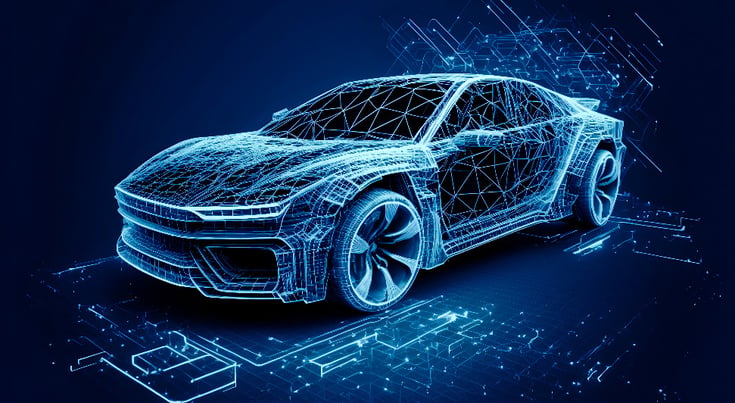With the rapid evolution of the automotive landscape comes elevated concerns regarding cybersecurity. This is especially true when it comes to the increasing numbers of Connected, Autonomous, Shared, and Electric (CASE) vehicles we see on the road.
As vehicles rely more and more on increasingly sophisticated software, the Software Bills of Materials (SBOMs) becomes even more crucial in answering growing cybersecurity concerns. This is especially true when we consider stringent industry standards such as ISO/SAE 21434, ISO 26262, initiatives like AUTOSAR, and regulations like UN Regulation No. 155.
The Rising Importance of SBOMs in CASE Vehicles
The automotive industry's shift towards CASE vehicles comes with considerable cybersecurity challenges. An SBOM, serving as a detailed inventory of software components, plays a pivotal role in answering these challenges.
By offering a clear view of software packages, libraries, and components within vehicles, SBOMs provide the software transparency and supply chain control we need in today's complex ecosystem of automotive software.
This software transparency is vital for effective vulnerability management, incident response, and aligning with emerging regulations and standards.
How SBOM supports Automotive Cybersecurity Standards
Standards such as ISO/SAE 21434 and ISO 26262 testify to the industry's commitment to cybersecurity and functional safety, even as we experience and navigate this era of significant technological advancements in automobiles.
ISO/SAE 21434, focusing on cybersecurity for automotive products, emphasizes the need for a comprehensive approach throughout the product lifecycle, including the management of cybersecurity in the supply chain. Here, SBOMs become instrumental in fulfilling these requirements by enabling better visibility and control over software components.
Similarly, ISO 26262 addresses the functional safety of electronic systems in vehicles. While primarily focusing on safety, the integration of SBOMs can enhance this standard by ensuring that safety-related software components are well-documented and vulnerabilities are efficiently managed.
Compliance with Global Regulations
Global regulations such as UN Regulation No. 155 and WP.29 mandate robust cybersecurity measures for automotive systems. SBOMs aid in complying with these regulations by providing a structured approach to documenting and managing software components, a crucial step in standing up a comprehensive Cybersecurity Management System (CSMS).
Leveraging SBOMs for Enhanced Security and Compliance
Finite State's Next Generation Platform brings the power of the industry's most comprehensive SBOMs to the ever-increasing need to mange software supply chain risks in CASE vehicles.
By offering continuous visibility and deep insights into the software ecosystem of today's connected automobiles, our platform ensures that vehicles are not only compliant with the latest regulations but are also equipped to tackle emerging cyber threats.
The Role of AUTOSAR and NHTSA Best Practices
The standardization of software architectures through AUTOSAR and adherence to NHTSA’s cybersecurity best practices further underscore the contributions that SBOMs bring to automotive cybersecurity.
By aligning with these frameworks, SBOMs facilitate better software management, scalability, and resilience against cyber threats.
SBOMs: Supporting CASE progress
In the rapidly changing world of automotive cybersecurity, SBOMs have emerged as a critical component of any cybersecurity program for connected vehicles. Adhering to rigorous standards and practices, such as ISO/SAE 21434, ISO 26262, and global regulations, is paramount in ensuring that the vehicles of today and tomorrow are not only technologically advanced but also secure and trustworthy.
SBOMs represent a cornerstone in the evolution of the CASE industry, providing the transparency, control, and compliance needed in the dynamic landscape of automotive cybersecurity.
Learn more
To explore further how SBOMs can revolutionize CASE vehicle security, we invite you to check out our comprehensive guide, "Supporting Connected, Autonomous, Shared, and Electric (CASE) Vehicle Security Using SBOMs."
Get behind the wheel of this white paper today and learn more about securing the future of automotive software supply chains.
Subscribe to Our Blog
Get the latest posts delivered straight to your inbox weekly.
Share this
You May Also Like
These Related Stories

SBOM's Integral Role in Connected Automotive Cybersecurity

Exploring Standards and Regulations for Automotive Cybersecurity



